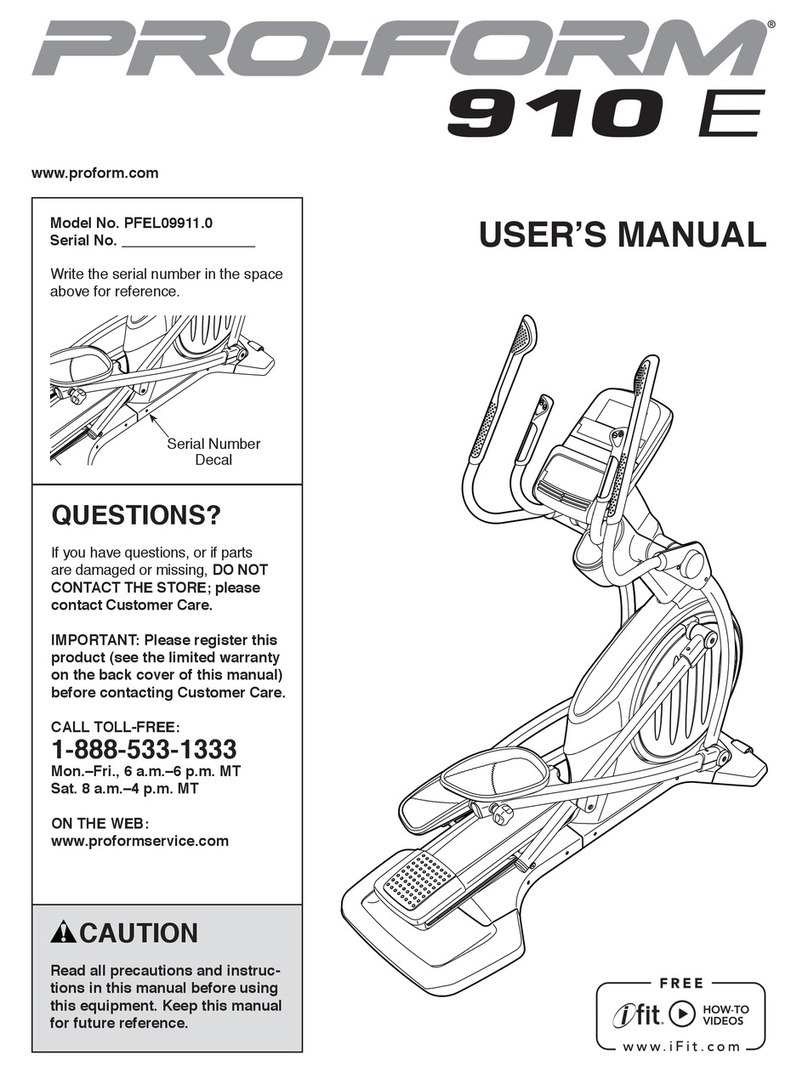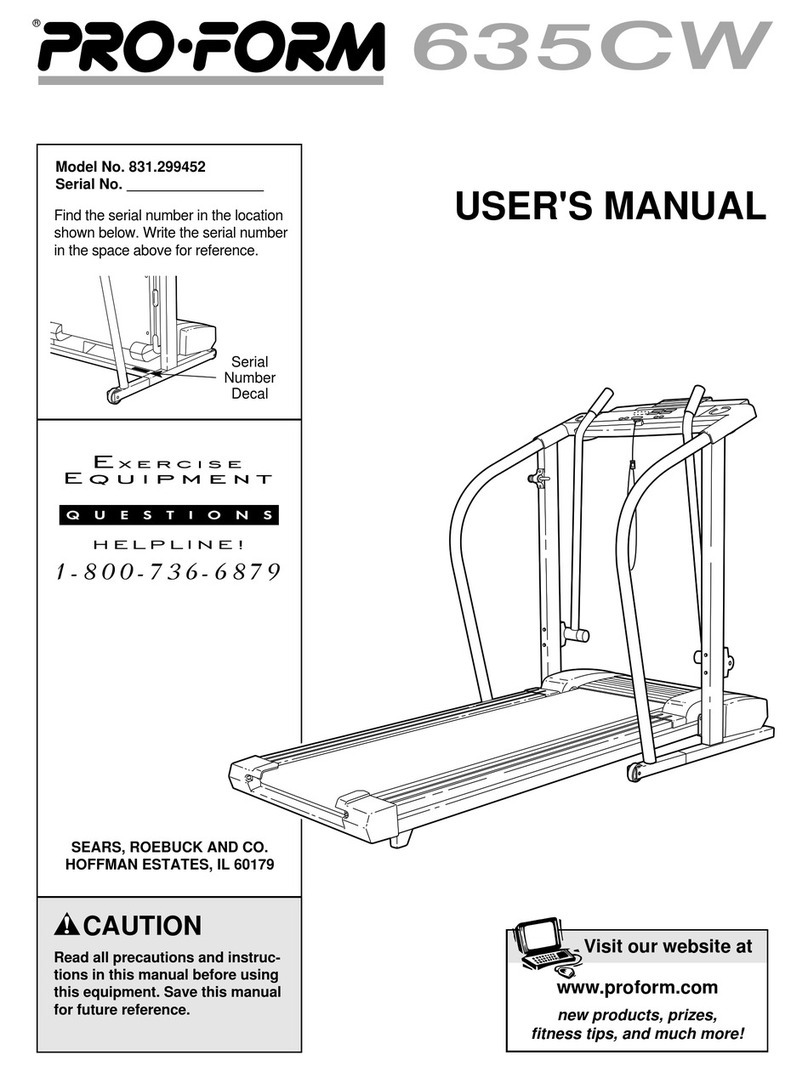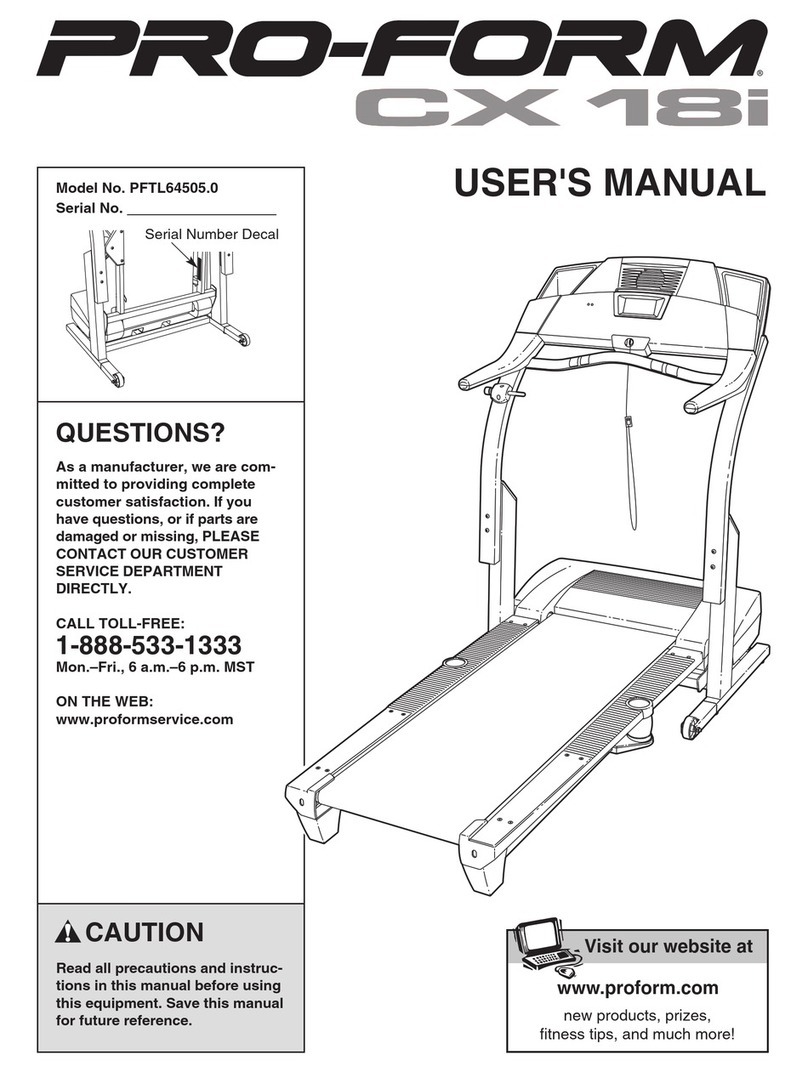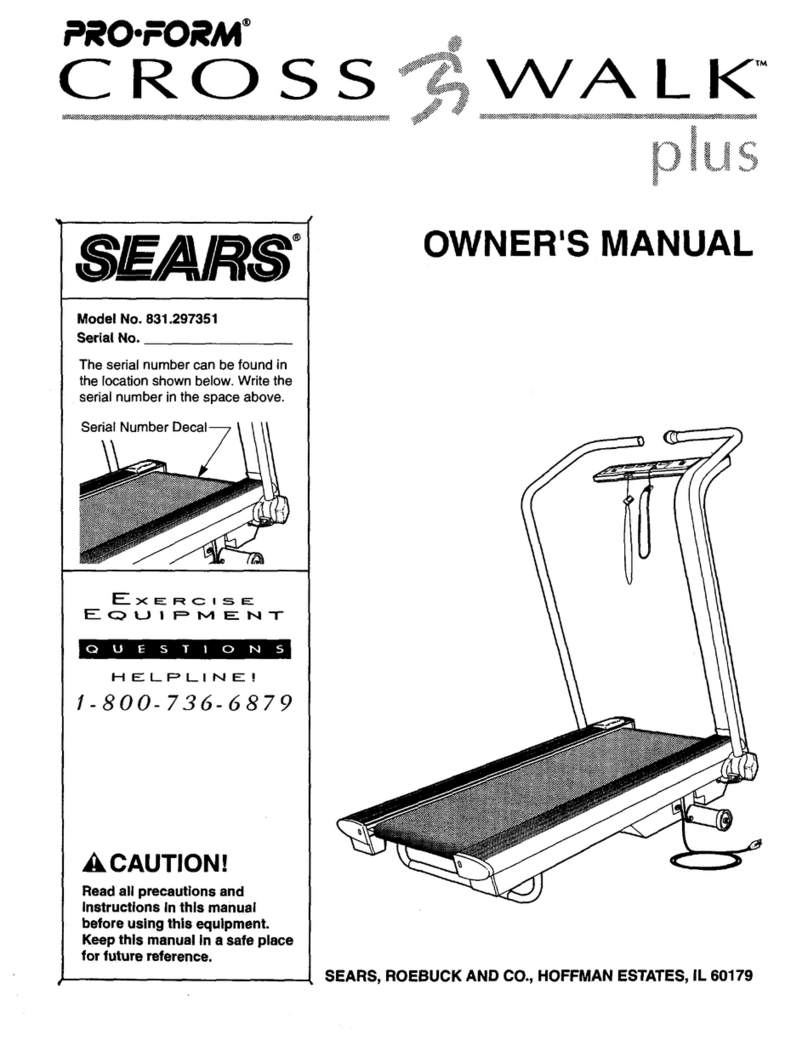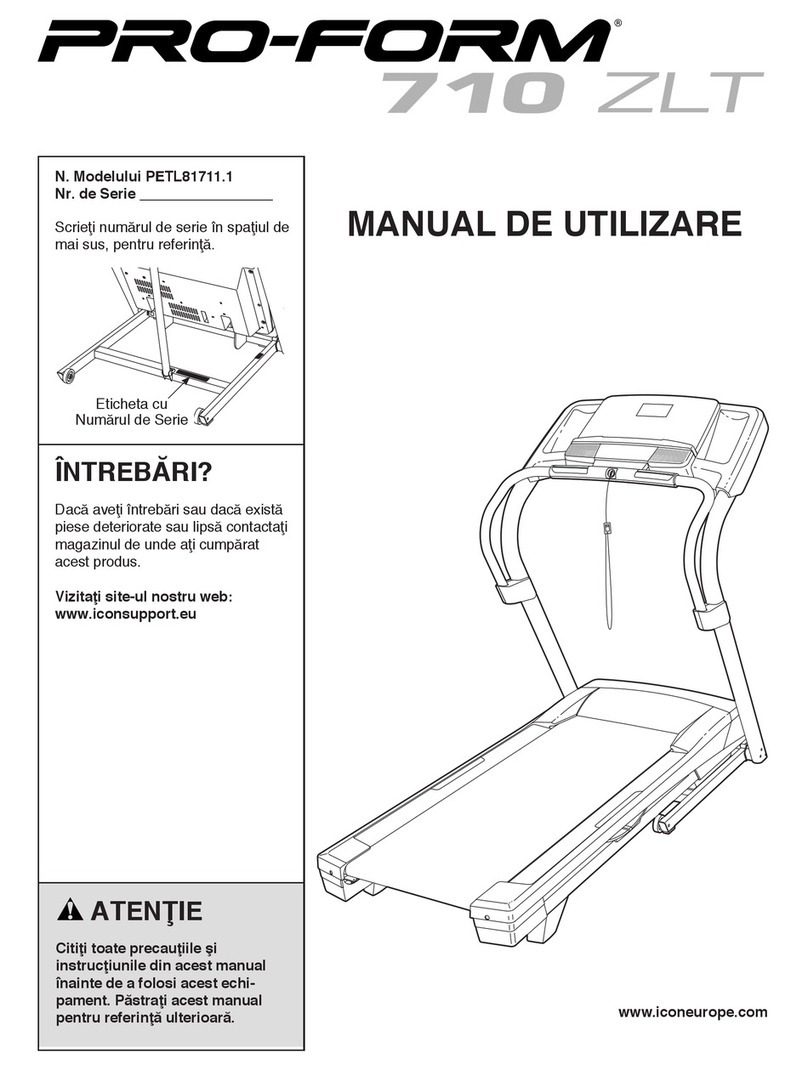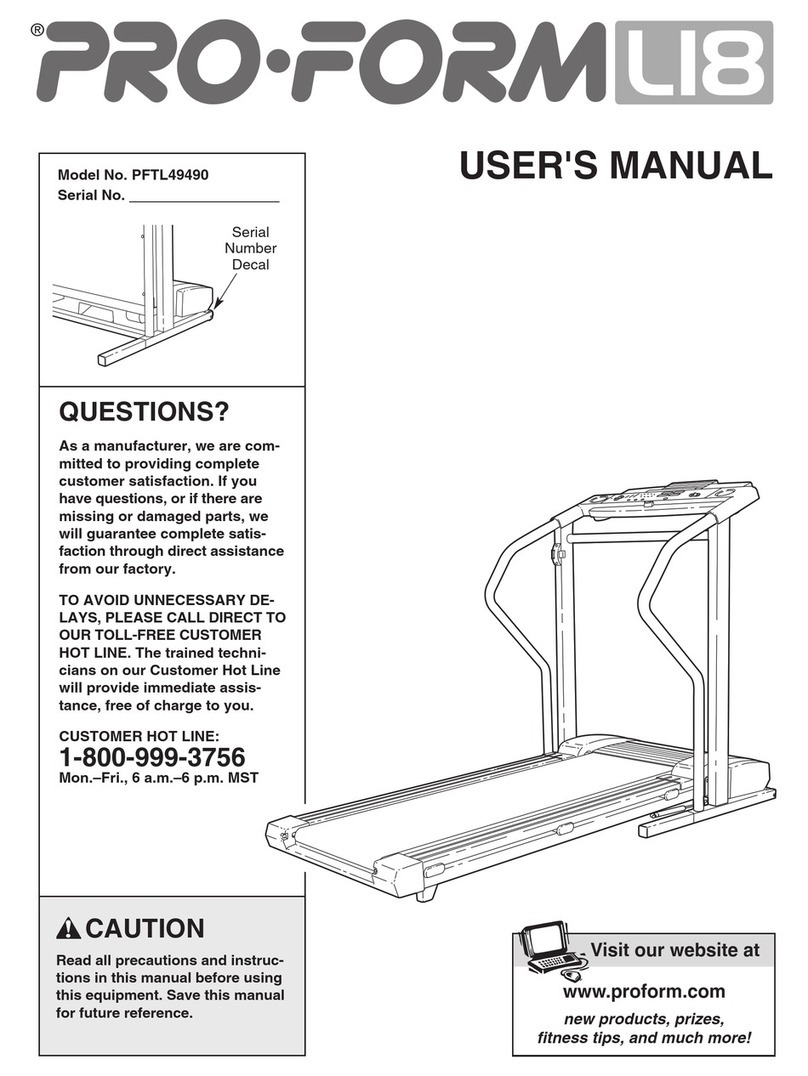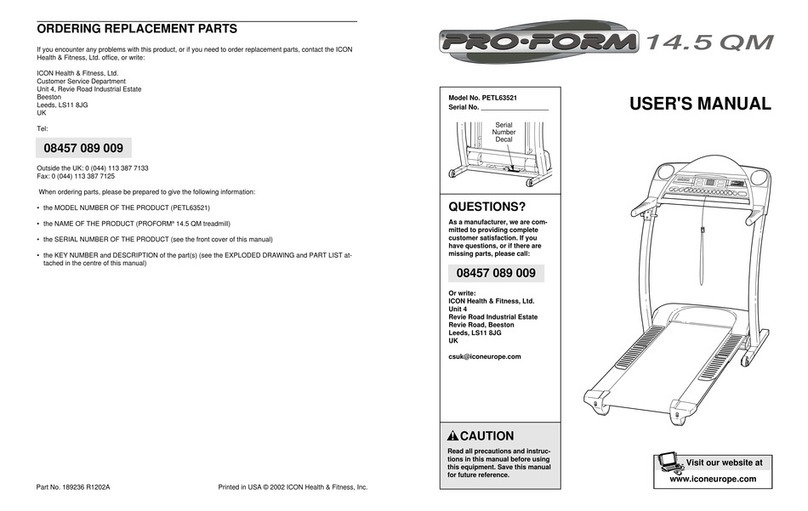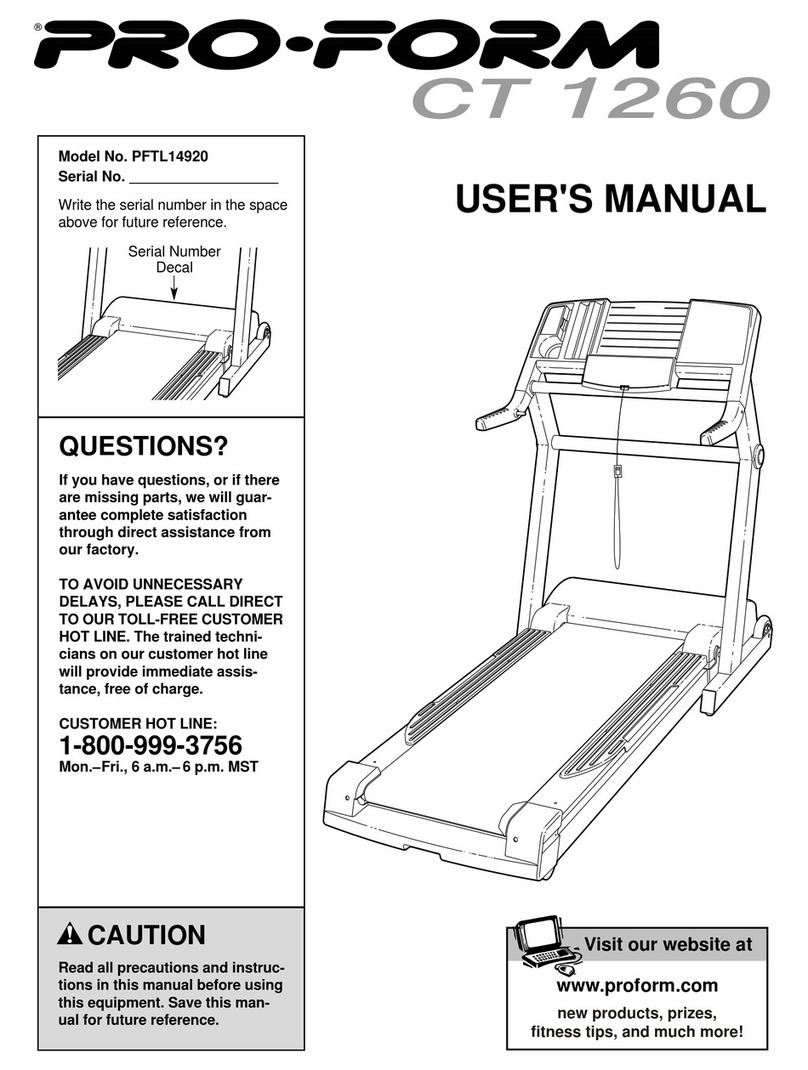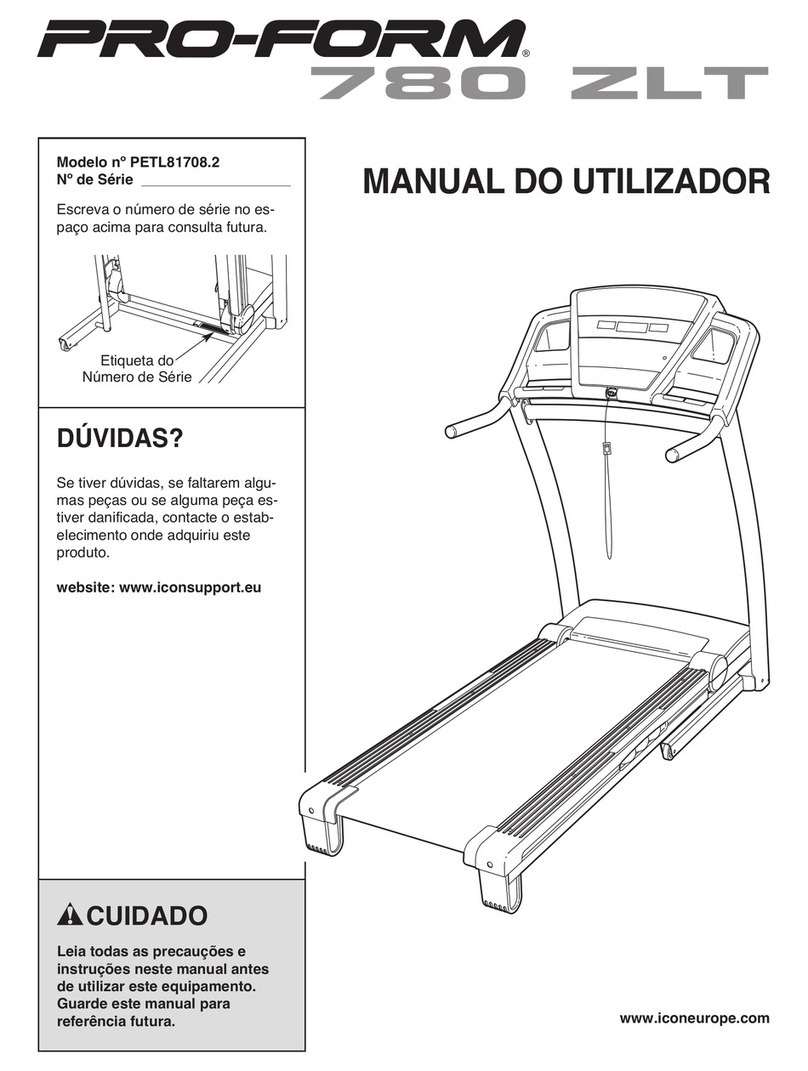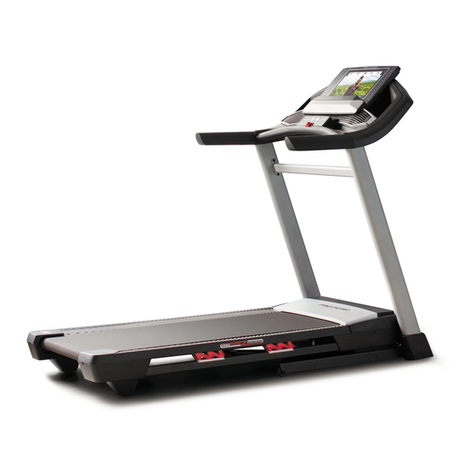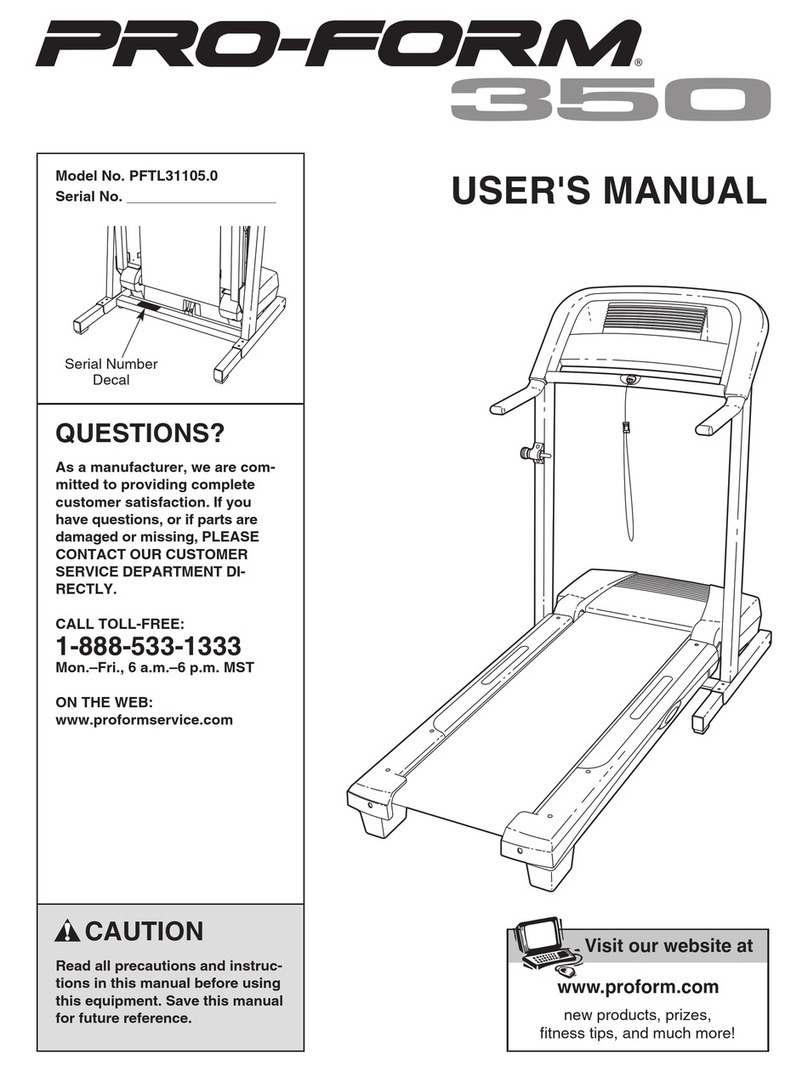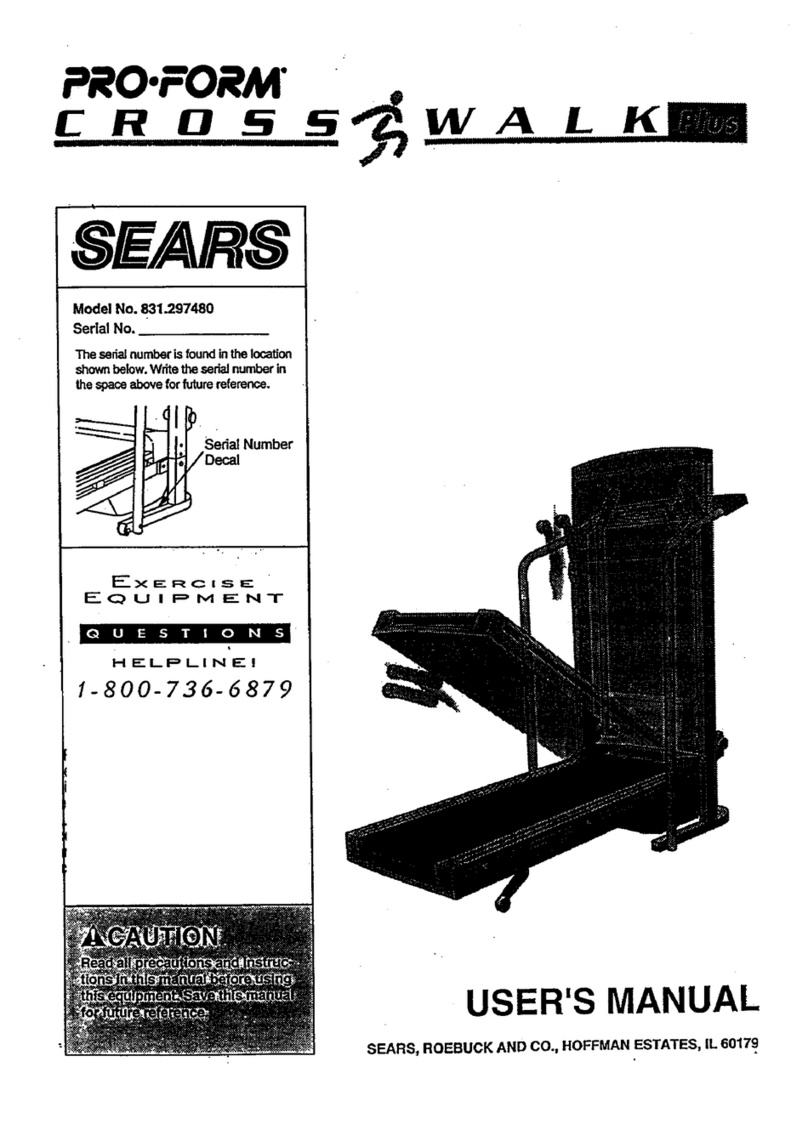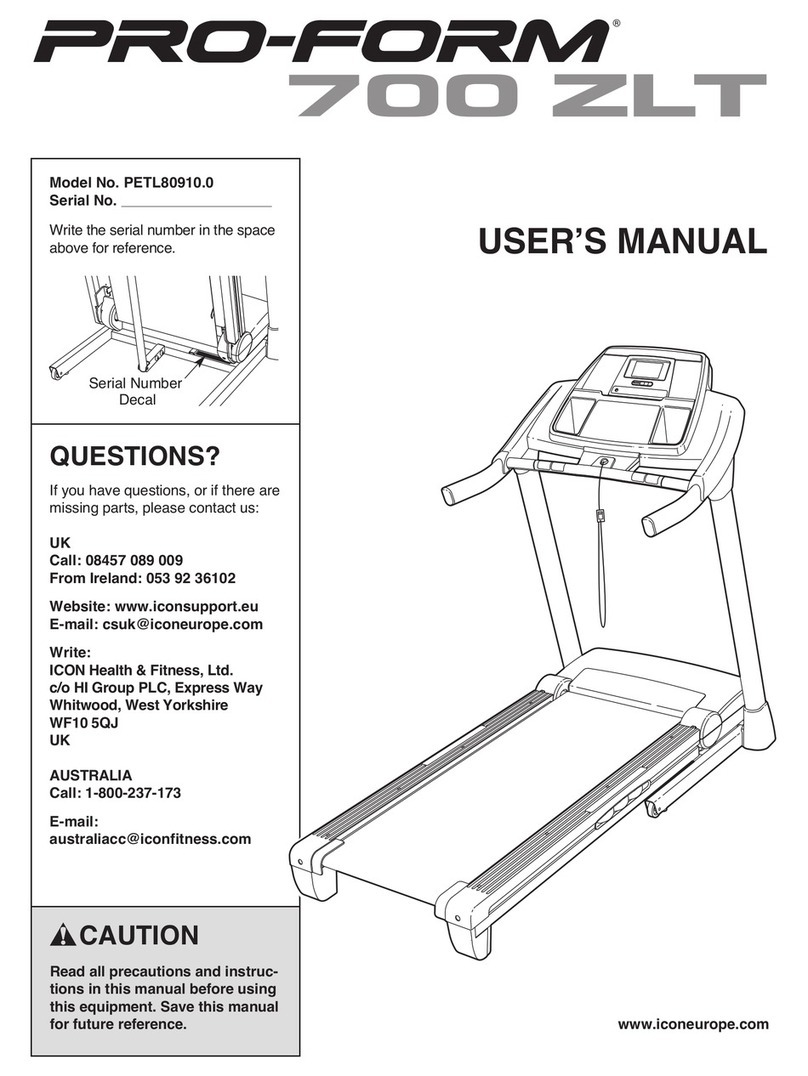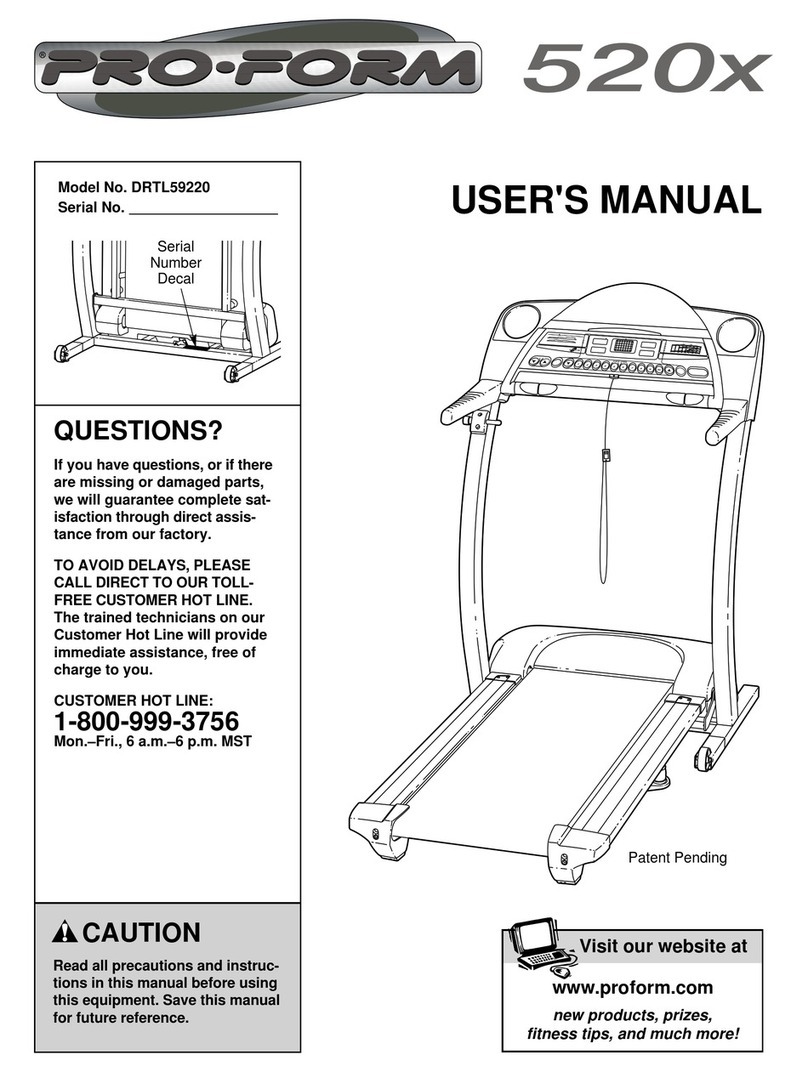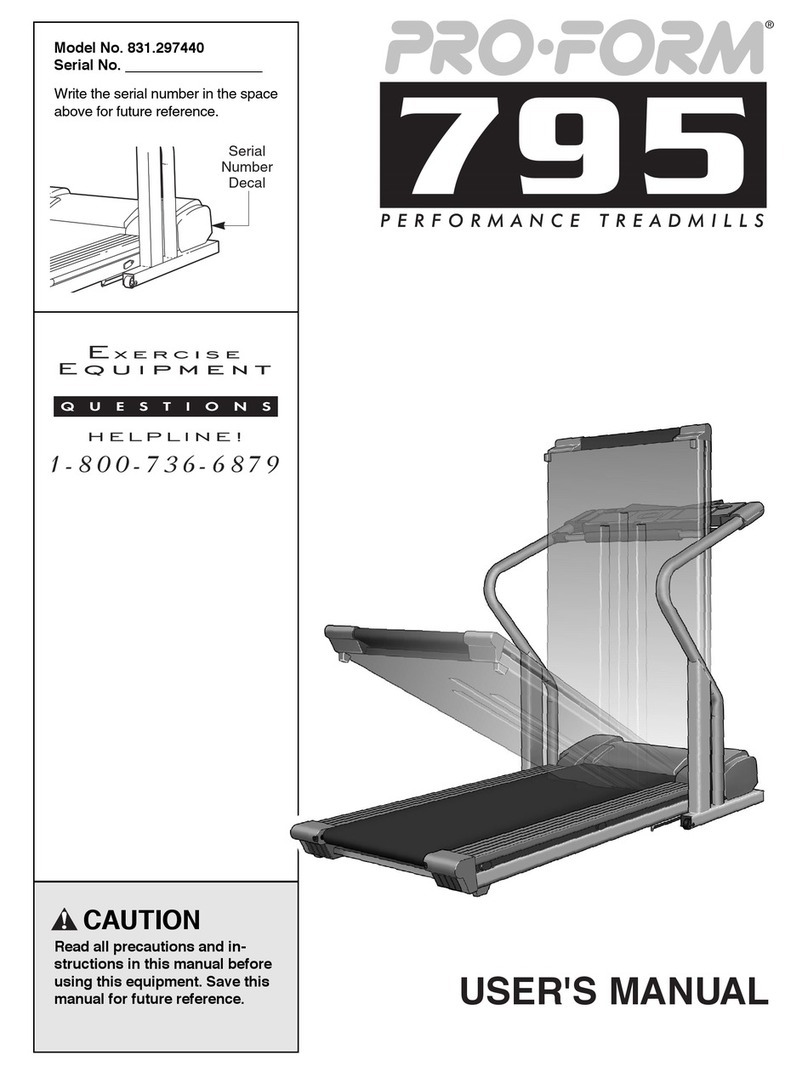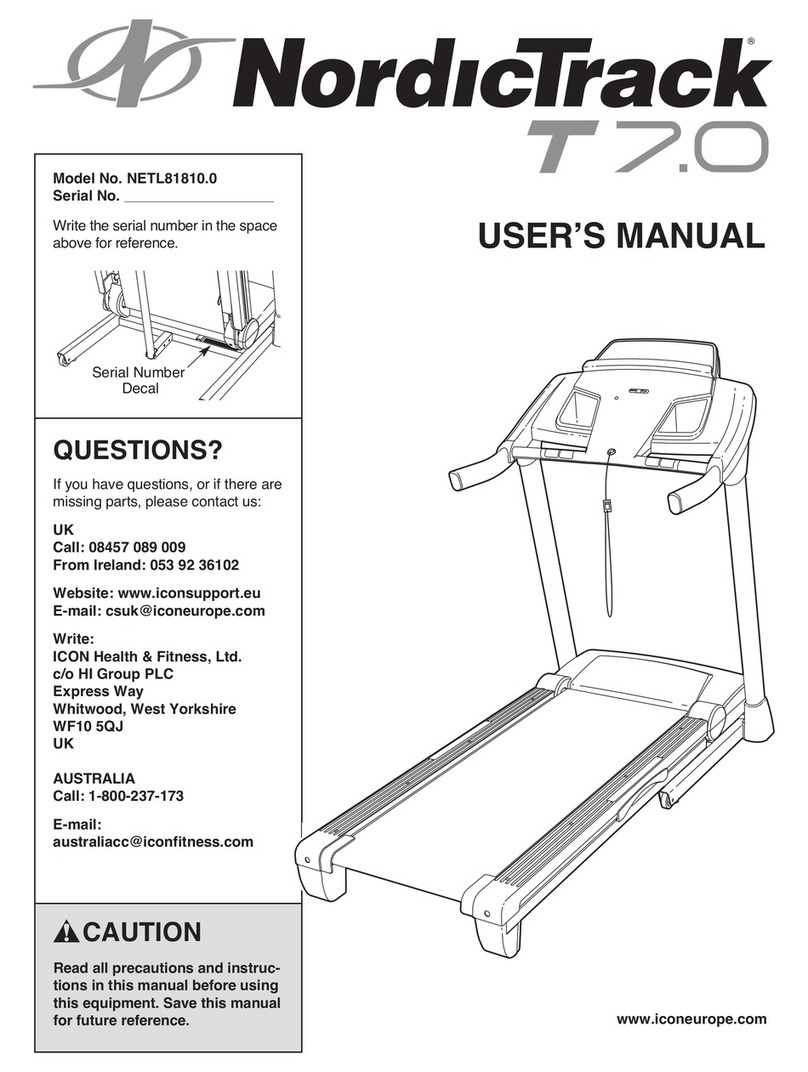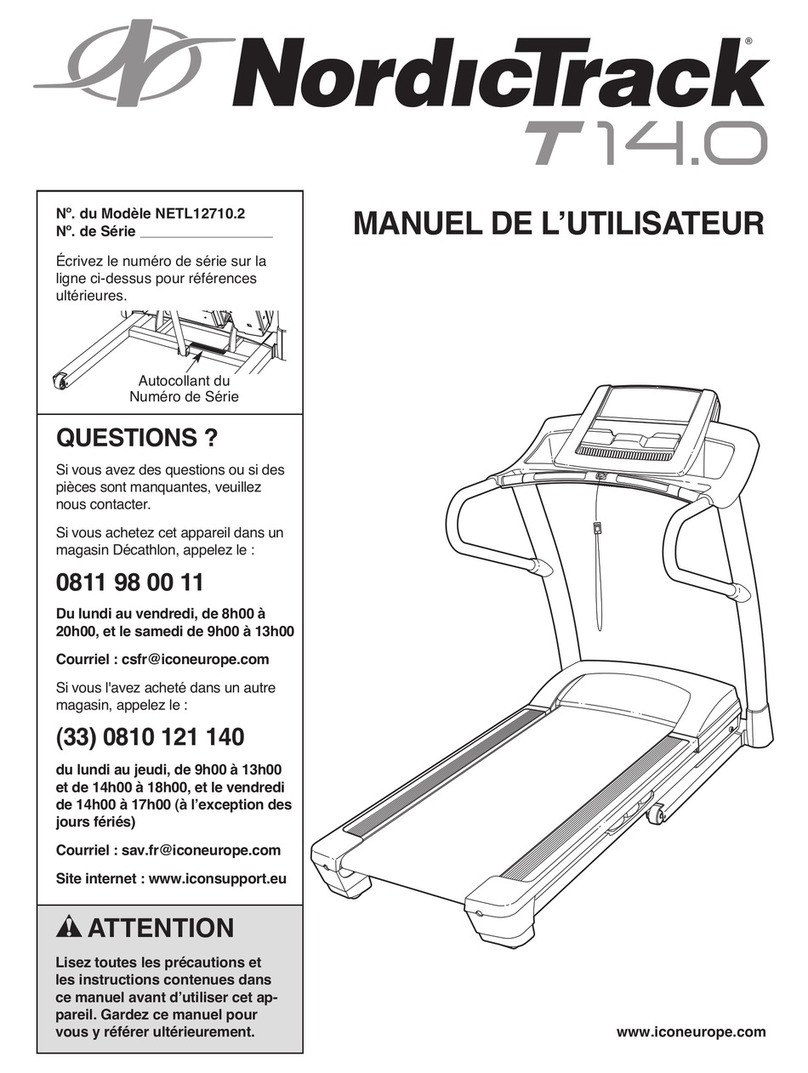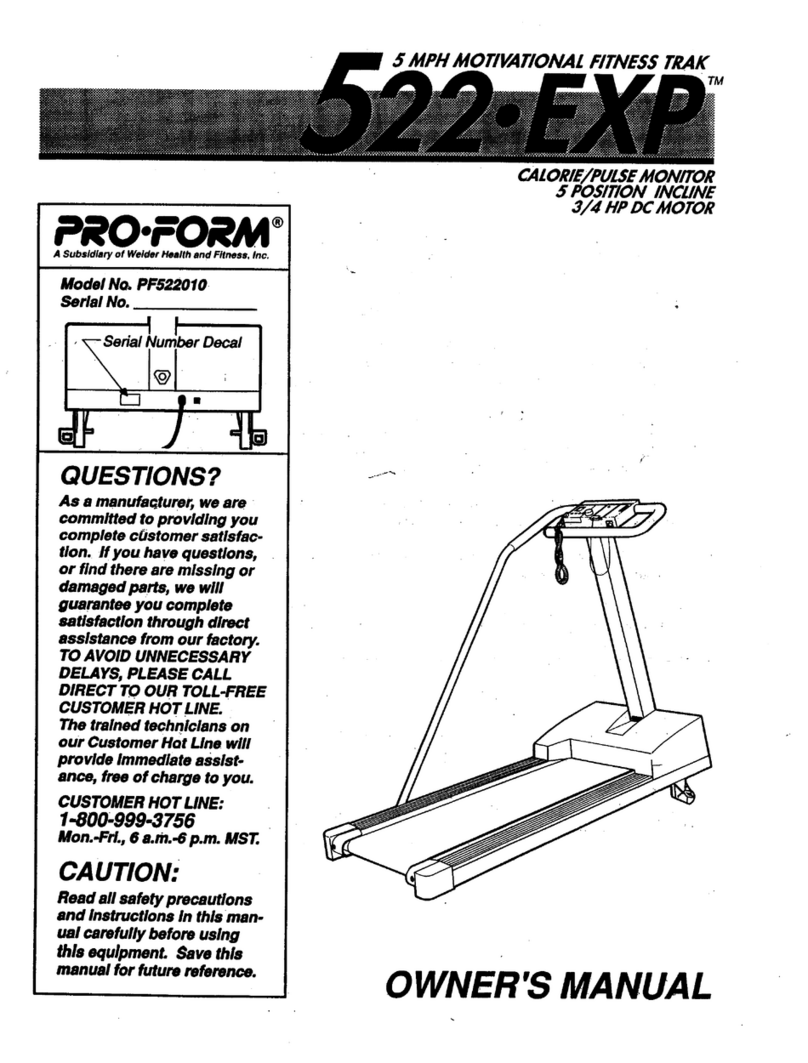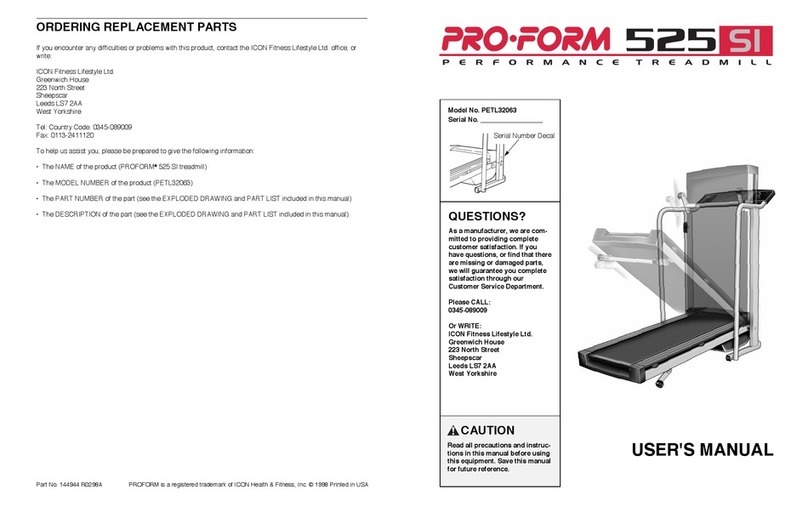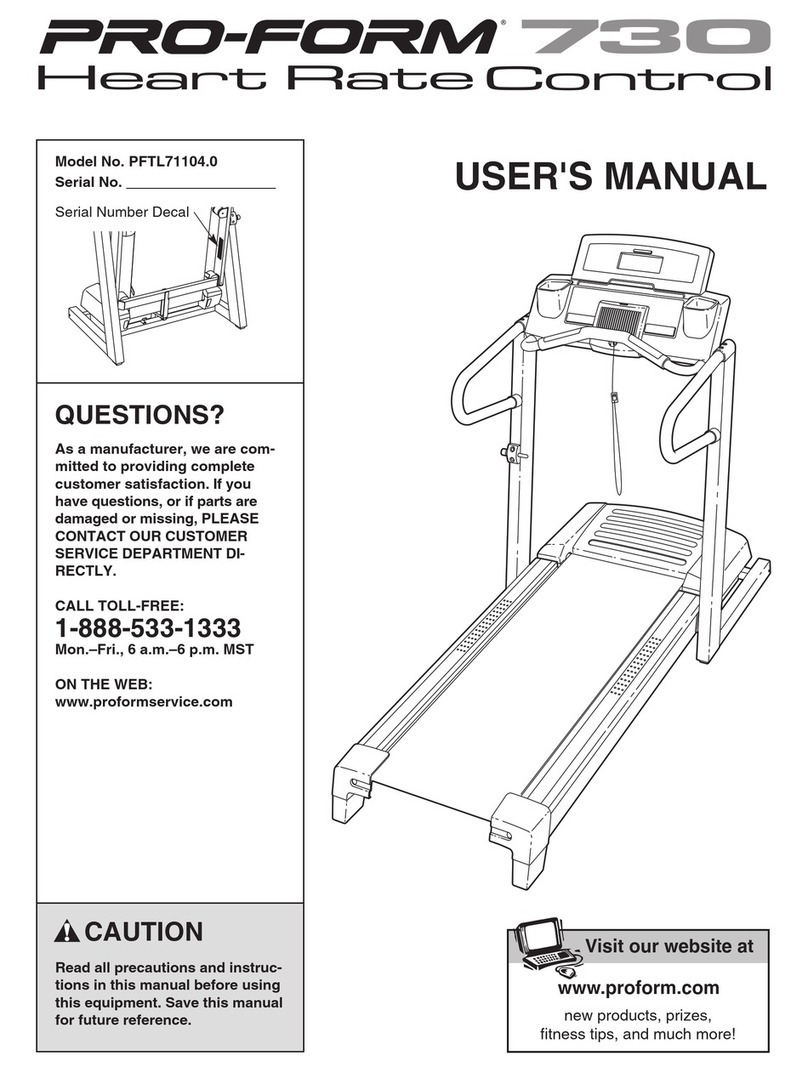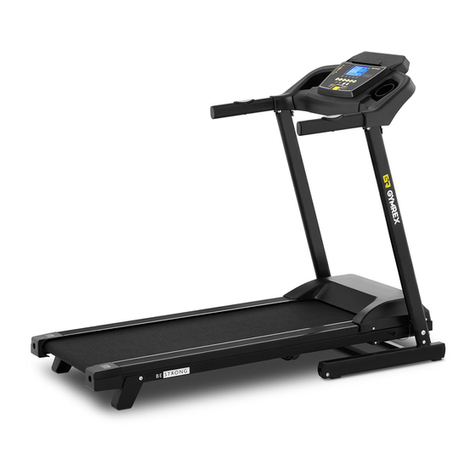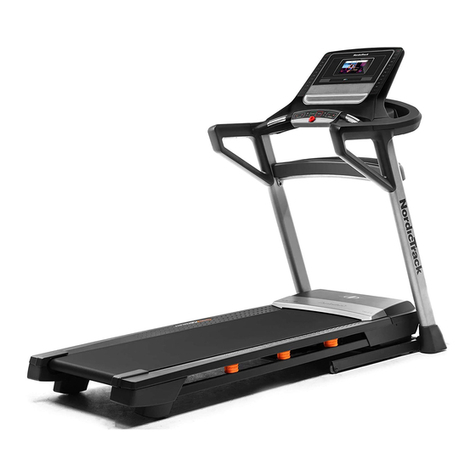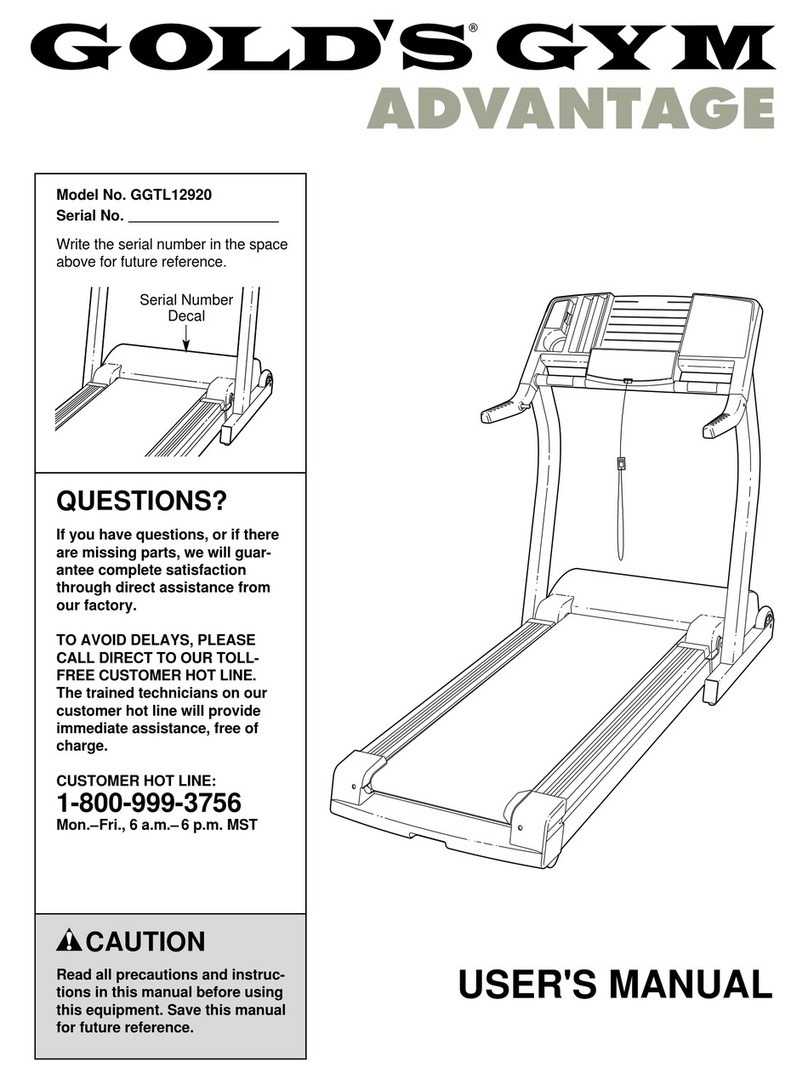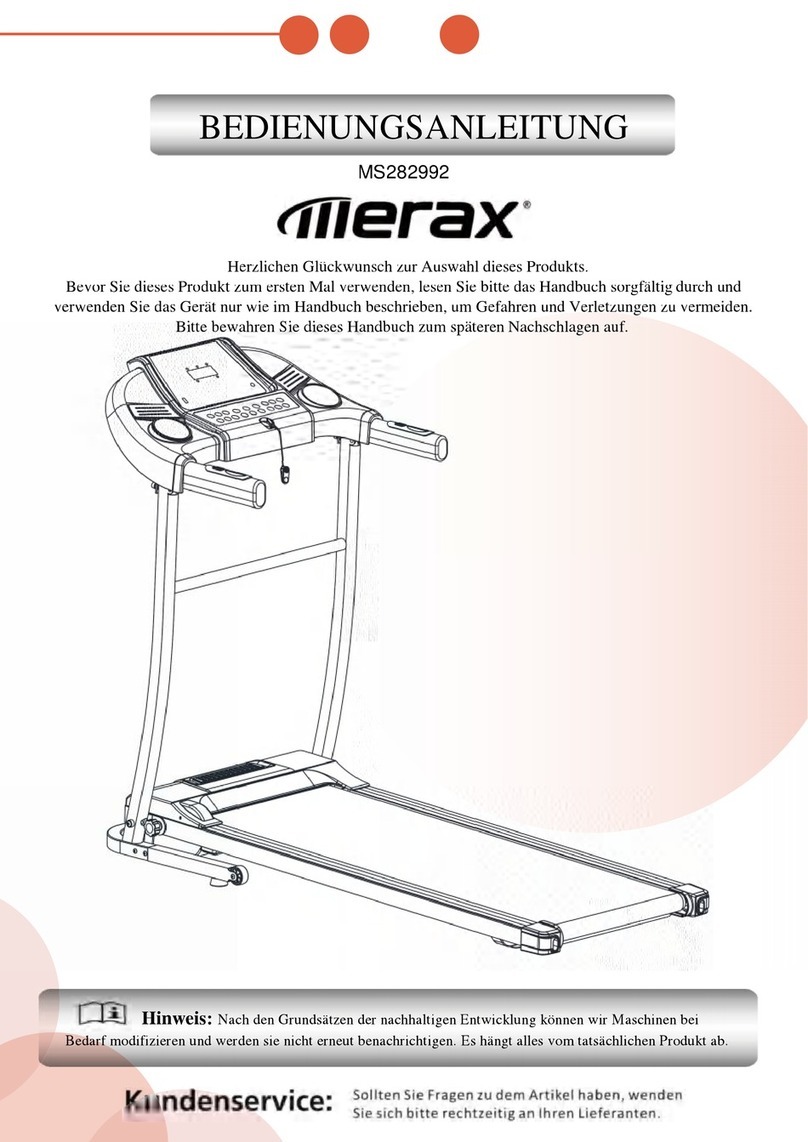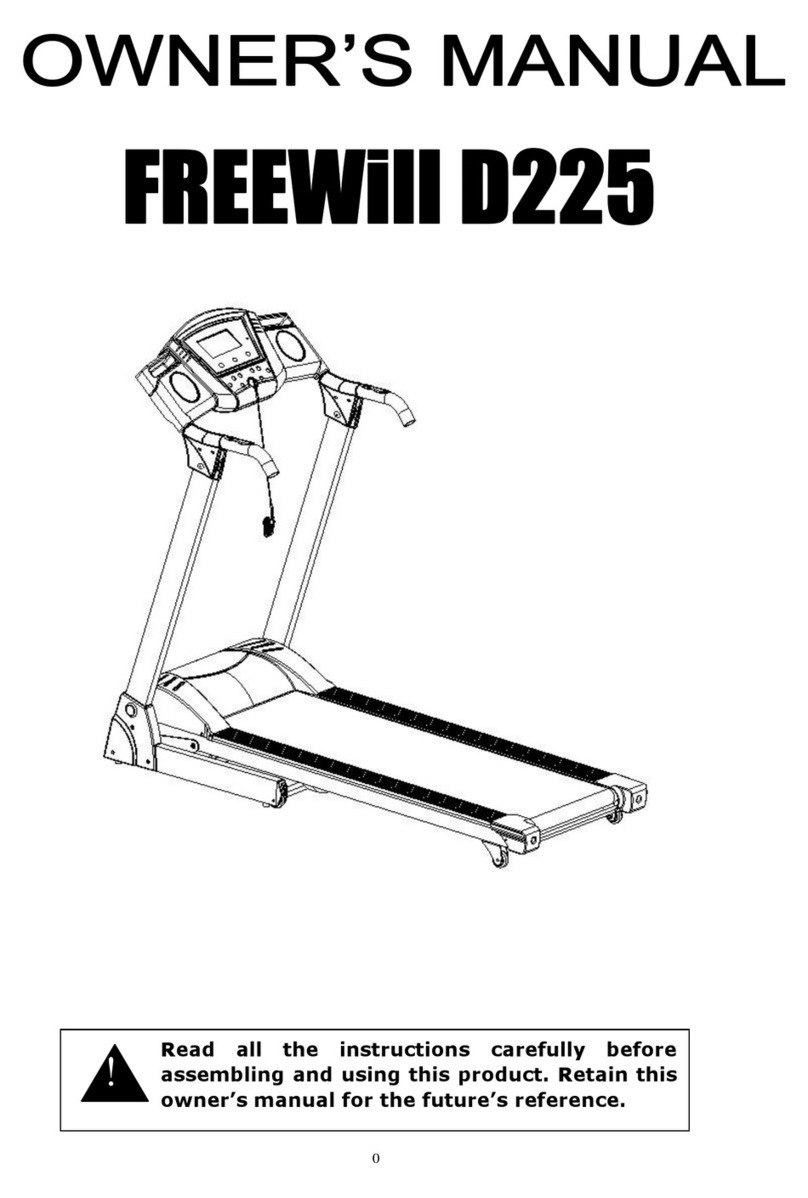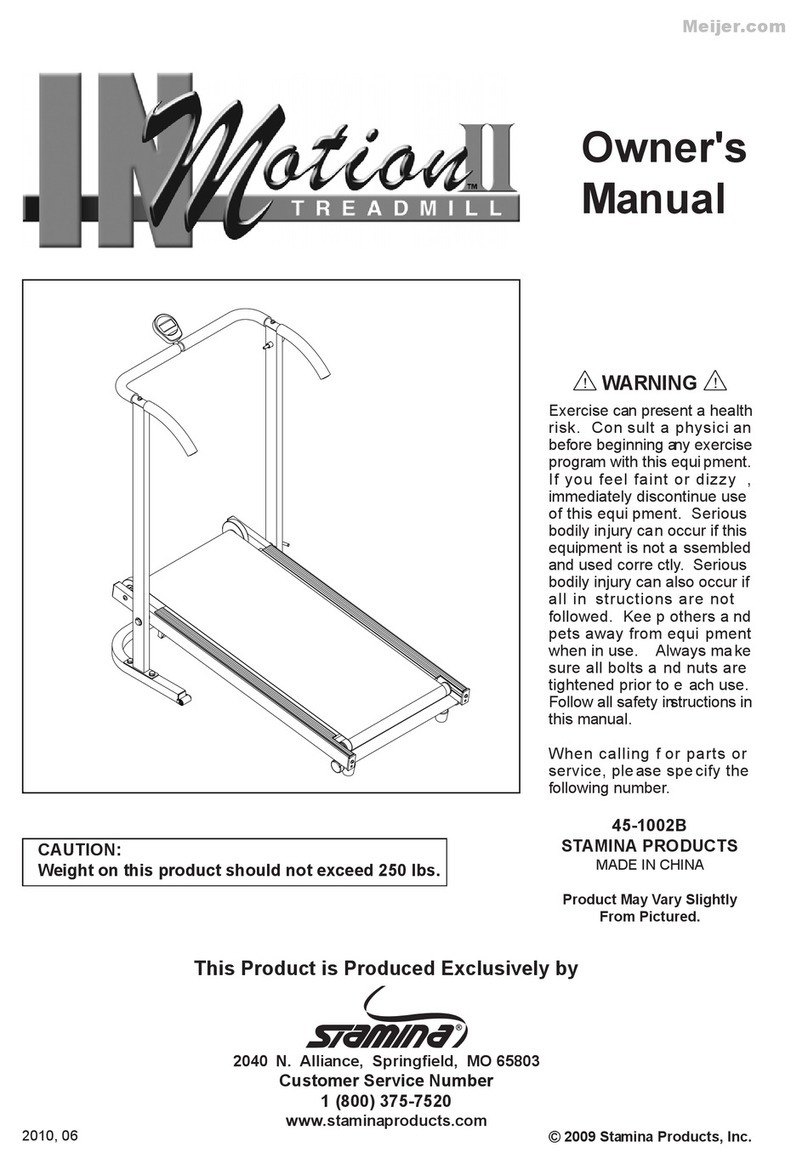
B Changetheinclineof thetreadmillasdesired.
Tochangetheinclineofthetreadmill,pressthe
inclinebuttons.Eachtimeoneofthebuttonsis
pressod,theinclinewillchangeby0.5%;Thebut-
tonscanbehelddowntochangethe inclinerapidly.
o
FOyeR I_OJME
Note: In the incline display, the first indicator will
fightwhen the incline is set at 1.5%. The second
indicator will light when the incline is set at 2% or
2.5%, the third indicator will light when the incline
is sot at 3% or 3.5%, and so forth. After the incline
buttonsare pressed, it wiUtake a moment for the
treadmill to reach the selected incline setting.
B Follow your progress with the LED track and
the four displays.
The LED Track--
The LED track rep-
resents a distance
of 1/4 mile. As you
exercise, the Indi-
cators around the
track witl light one
at a time until you
lO0 0 0 0 0 0 0 0
O•
Ioo...
have completed 1/4 mile. A new lap will then begin.
DiSTANCE/LAPS
display--This display
shows the distance that
you have walked or run
and the number of laps
you have completed (one A ow11
LoT
DISTANCE LAPS
lap equals 1/4 mile). The display will alternate
between one number and the other every seven
seconds, as shown by the arrows in the display.
TiME/PACE display--
This display shows the
elapsed time and your cur-
rent pace (pace is mea-
sured in minutes per mi/e).
The display will altemate
IB:4B I
TIME PACE
between one number and the other every seven
seconds, as shown by the arrows in the display.
Sp_E=ED_dislday--This
display shows the speed
of the wal.klngbelt,.in
miles per hour or kilome-
ters per hour.The letters
*MPH" or "KPI-I=wtll ap-
pear toshow which unitof measurement is selected.
To change the unit of
measurement, hold down
the STOP/RESET button
while Inserting the key
into the console. An "E,"
for english miles, or an ILL !
'DISTANCE LAPS
"M," for metric kilometers, will appear in the DIS-
TANCE/LAPS display. Press the SPEED Z_button
to change the unit of measurement. Remove and
then reinsert the key.
CALS/FAT CALS/
PULSE displayiThis
display shows the ap-
proximate numbers of
calories and fat calories
you have burned (see
PULSE
C_ALS. rAT CALS.
FAT BURNING on page 14). Every seven sec-
onds, the display will change from one number to
the other, as shown by the arrows in the display.
This display will also show your heart rate when
the pulse sensor is used (see step 5).
_'_ Measure your pulse, if desired.
Stand on the
foot rails and Metal Contacts
place your
hands on the
metal contacts
on the handrail.
Your palms
must be resting PULSE
on the upper II ]1
contacts, snd _12.._
your fingers must
be touching the cALS. FATCALS.
lower contacts--
avoid moving
your hands. When your heart rate is detected, the
heart-shaped indicator in the CALS/FAT CALS/
PULSE display flashes steadily and a"P" appears
in the display. Hold your thumb at this level. After a
few seconds, three dashes will appear in the dis-
play and your heart rate will be shown. For the
most accurate heart rate reading, continue to hold
the contacts for about 15 seconds.
Try the sensor several times until you become
familiar with it. Remember to stand stillwhile mea-
suring your pulse.

